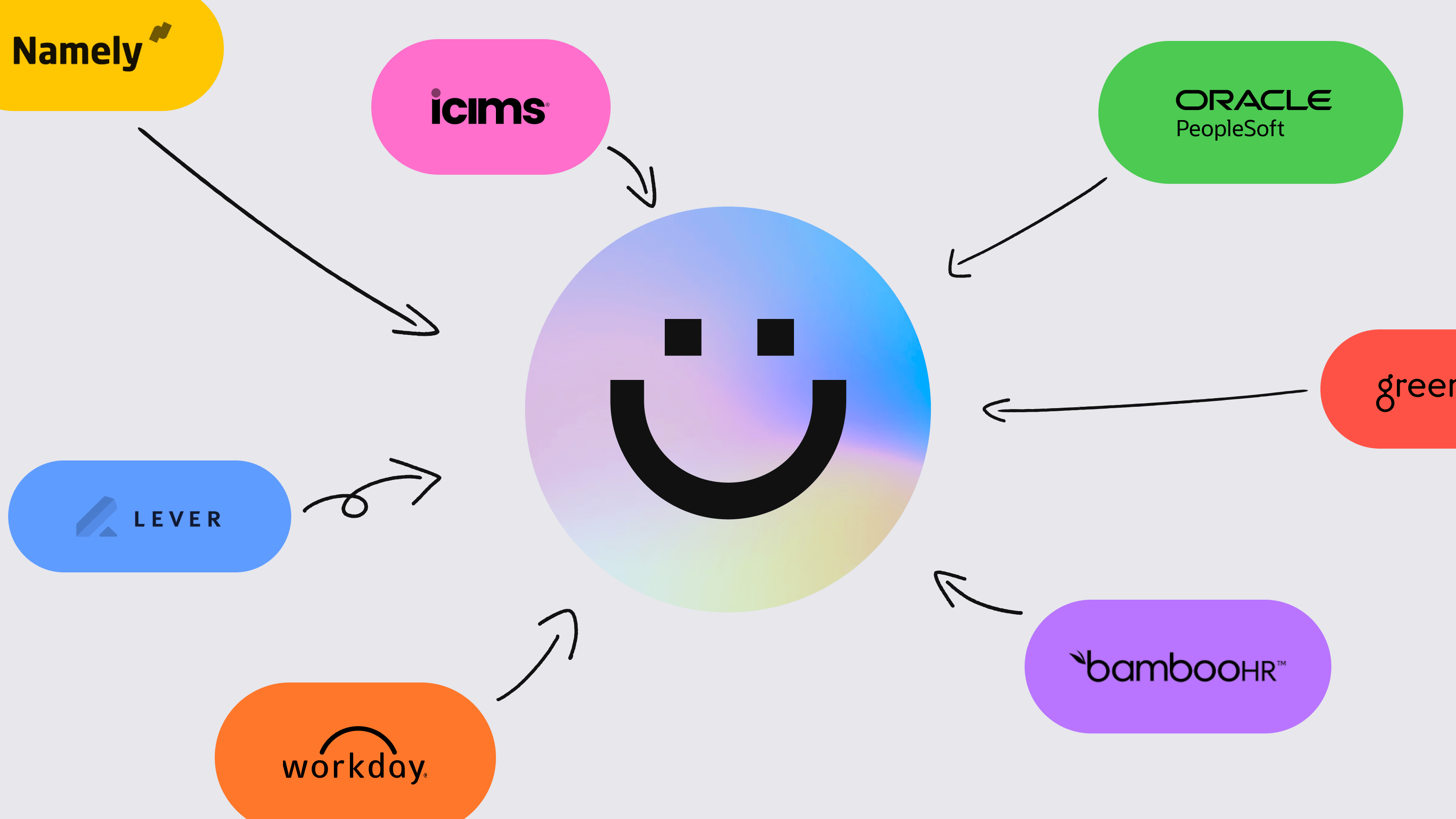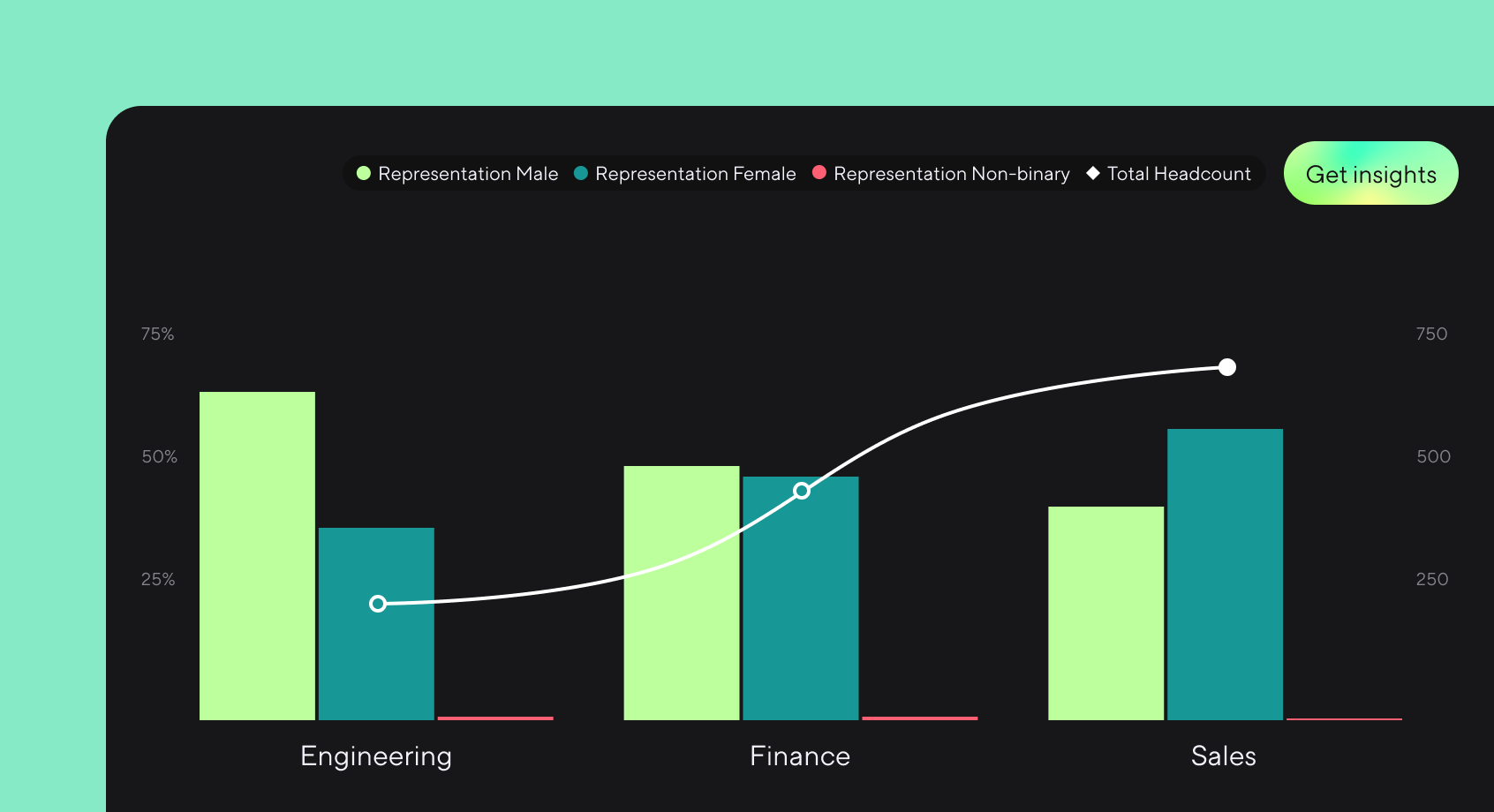Buyer’s Guide: AI for HR Data
Catherine Tansey – Jul 24th, 2024
Not all AI is created equal. Here's what to know when choosing an AI for HR data.

The buzz around AI is hard to escape. We’re quickly approaching the “there’s an AI for that,” age, where companies meet their business needs with a patchwork solution of specialized AIs.
Amid the frenzy, people leaders and CHROs have emerged as key players in bringing generative AI to their organizations and are under immense pressure to invest in AI. A recent survey by Gartner found 76% of HR leaders believe their organization will fall behind if they don’t adopt and implement AI solutions in the next 12 to 24 months, compared with those that do.
But, with all the noise, identifying the best AI HR data platforms can be a challenge. This article is here to help people leaders and decision makers understand the key elements of evaluating AI for HR data.
AI for HR: The current landscape
Seemingly overnight, AI has taken the business world by storm. Today there are already a wide range of ways that HR teams are leveraging AI in their everyday work:
-
Content creation. HR teams are using generative AI to create job postings, new hire welcome letters, interview summaries, internal announcements, and more.
-
Content evaluation. Companies are turning to AI to screen applications, identify bias in job posts, and aggregate employee feedback, among other use cases.
-
Documentation. One of the most common use cases for AI today is more intelligent search in document management. Think quick and accurate policy retrieval, regulatory document search, and incident reports.
-
Data analysis. People teams are using AI to analyze HR data and discover new insights. If done right, this allows HR folks to assume work that’s typically reserved for analysts.
These are all relevant ways HR teams are using AI, but at Dandi, we’re most focused on and excited about the HR data analysis capabilities of native AI platforms. Platforms that do this exceptionally well equip companies with instant insights, saving weeks of time, budget, and frustration.
Native AI vs. “bolt-on” AI
Companies offering AI for HR data typically fall into one of two categories: ‘bolt-on’ AI or AI-native platforms. Native AI platforms, like Dandi, offer distinct advantages, but bolt-on solutions make up much of what’s available today.
Bolt-on AI solutions leverage large language models (LLMs) to cover basic use cases. They’re often legacy companies or long-standing software solutions that have been quick to deploy their ‘AI features’ amid the AI mania — but their capabilities are limited.
“In these types of companies, they’re trying to add AI features to whatever tool they have. So if you have an applicant tracking system, you may have some AI generation of job descriptions or job posting,” say Hernan Chiosso, an HR consultant specializing in AI solutions and author of the Substack ProductizeHR.
When analyzing HR data, AI-native platforms offer stronger performance and accuracy.
AI-native platforms cannot function without its AI core, which makes AI-native options the premium choice. “These types of tools wouldn’t even be possible without AI. These are the most impressive ones because they aim to not only improve, but completely revolutionize the way business processes get done,” says Chiosso.
Dandi co-founder and Chief Technology Officer Mamdouh AlRamadan offers the example of mobile development alongside the advent of smartphones to clarify.
“Back in the day there was a massive movement toward mobile development and we started seeing the words iOS- native and Android-native versus a cross platform application. These native-applications will always be more accurate, better performing, and less buggy because everything is within the platform.” The same is true for AI-native workforce intelligence platforms.
Read on for 3 key takeaways as you navigate the flood of AI platforms hitting the market today.
Choosing AI for HR data: Here's what matters
1. Fast time to insight
Since everyone is offering AI today, tools need to show value fast because the novelty will wear off quickly. “What are the differentiators? The tool should show value not just by generating things but by generating high quality things, fast,” says Chiosso.
Today, businesses spend weeks summarizing dashboards to derive insights. It’s a huge pain point, but the majority of AI on the market does little to resolve this. Most bolt-on AIs essentially function like a glorified search engine: they can pull data but can’t generate live calculations.
“Look for AI that is going beyond data retrieval. Be sure that you're buying something that adds true value, like generating on-the-spot insights,” says AlRamadan.
Accuracy is also an issue for most AI. “The best bolt-on models available today are accurate only to 61%, and once trained, brought up to 75% accuracy,” says AlRamadan.
Dandi generates insights instantly with uncompromising accuracy — Dandi AI has a 98% accurate rate of analysis.

2. Data ownership & security
AI security is a real and important concern. Organizations are thrilled by the efficiency gains these models promise but can’t help but wonder about the potential for reputational damage, regulatory issues, and legal risks. Especially when it comes to sensitive HR data, AI creates new questions around ownership and use.
To prioritize security, HR leaders should avoid models that train on their company’s HR data.
“If I train on a client's data, then anyone who's figured out how to write a few prompts here and there, and knows to continue repeating the questions, could easily access someone else's data,” says AlRamadan.
If this sounds stranger than fiction, bear in mind it’s already happened. In November 2023, Google researchers were able to get ChatGPT to reveal its training data by repeating a single word, like ‘poem’ or ‘company,’ ad infinitum. ChatGPT divulged whole sections of training data, including thousands of examples of personally identifiable information it had scraped from the web.
Privacy and data ownership matter. Choose an AI that doesn't train on your HR data.
“It’s terrifying that the information can be extracted,” says Chiosso of the incident.
Companies must also assess whether they retain ownership and custody of their data, as not all AI solutions guarantee this. Data ownership isn’t just a legal issue but an ethical one, especially given the personal nature of HR data. It’s crucial that companies retain control of their own data to protect employee confidentiality, ensure security, and meet compliance requirements.
Another on-the-ground challenge for HR teams sussing out AI solutions is access control. How are roles and permissions handled in the system? Non-native AI systems can struggle to understand who can or should be able to access certain data, say, for example, a VP-level trying to view data from a different department.
Native AI platforms, like Dandi, are more sophisticated, and Dandi’s roles and permissions are embedded in our AI.
“We don’t allow it to access the data — a feature only available because we haven’t trained the AI on user roles and permissions but rather custom built a specific set of parameters,” says AlRamadan. “If someone does not have permission to view compensation data in Dandi, our AI won’t answer their compensation questions, plain and simple.”
3. Simplicity
Older platforms with bolt-on AI features can struggle working with multiple data sources. This can lead to AI bloat, with HR teams relying on many different copilots in order to meet their needs.
HR teams need a single AI that can work across all data.
Rather, HR teams need a single AI that can work across all data. Native AI tools, like Dandi, are capable of providing much more value to HR leaders and orgs, as the AI is embedded into the core architecture of the platform, ensuring seamless integration of AI capabilities with all functionalities.
All processes, from data ingestion to analytics and reporting, are designed to fully leverage AI. This enables everything from in-the-moment data retrieval to advanced predictive analysis and contextual insights that are deeply embedded within the system.
Having a single AI for HR not only provides quick access to powerful insights but also simplifies operations.

Start turning your data into insights
AI isn’t just hype. It’s going to be a major driving force in the evolution of HR.
To start building for the future, it's essential that HR teams begin leveraging these technologies today. But it's important to know that not all AI's offer equal value. Don't settle for a smoke-and-mirrors product.
Real AI for HR data works with all your HR systems, seamlessly secures your data, doesn't train its models on your data, and offers exceptional ease of use and time to insights.
This is exactly what we've built at Dandi. We'd love for you to see it for yourself.
Want to try Dandi AI for 30 minutes? Book a demo to get started.
More from the blog
Announcing more powerful Dandi data visualizations
Team Dandi - Oct 23rd, 2024
The New Maturity Model for HR Data
Catherine Tansey - Sep 5th, 2024
Buyer’s Guide: AI for HR Data
Catherine Tansey - Jul 24th, 2024
Powerful people insights, 3X faster
Team Dandi - Jun 18th, 2024
Dandi Insights: In-Person vs. Remote
Catherine Tansey - Jun 10th, 2024
Introducing Dandi AI for HR Data
Team Dandi - May 22nd, 2024
5 essential talent and development dashboards
Catherine Tansey - May 1st, 2024
The people data compliance checklist
Catherine Tansey - Apr 17th, 2024
5 essential EX dashboards
Catherine Tansey - Apr 10th, 2024
Proven strategies for boosting engagement in self-ID campaigns
Catherine Tansey - Mar 27th, 2024








